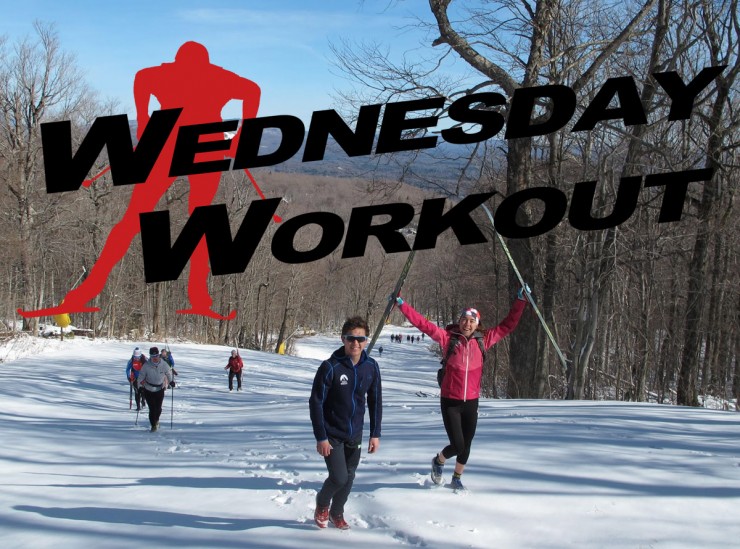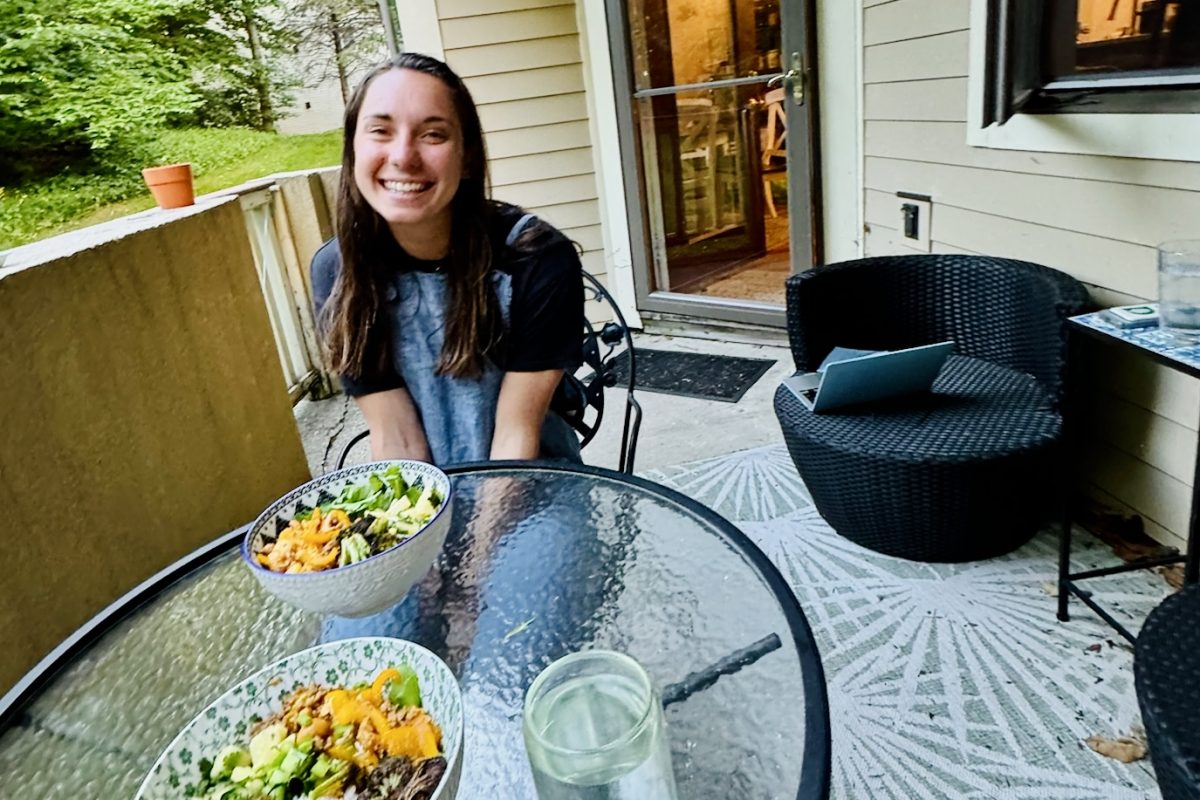
Perspective is a good thing. Maintaining it is tough in endurance sports where training plans and hours logged are emphasized. It’s a numeric puzzle, a physiological puzzle and a psychological puzzle. All that requires basic fun from time to time.
Katherine Ogden, 18, hails from Landgrove, Vt. FasterSkier’s two-time Junior of the Year, Ogden is a day student at the Stratton Mountain School and was named to the U.S. Ski Team development squad last season. Asked about her favorite spring workout to keep it fun and real, she says find a mountain.
“The basic plan is we start at the bottom of a ski mountain (for us it’s Stratton Mountain) wearing running shoes and carrying a backpack containing ski boots. we then try to strap our skis to the backpack for the hike up,” Ogden wrote in an email. “We then hike up the mountain which usually takes around 30-45 minutes for Stratton. This is generally level one unless you are a very enthusiastic hiker.”
Ogden recommends packing skate boots for the descent. Although on alpine ski trails, the descent requires good ankle support and places a premium on fear control and gear integrity — those pricey poles are easy to snap.
“What ensues is a harrowing adventure of norpineing (nordic alpine),” she explained. “This workout is good for the spring because it’s not very taxing training wise but it’s a lot of fun and a good way to work on agility and downhill confidence.”
The Workout:
– Find your local ski hill, preferably one closed for the season or at least void of gravity slaves.
– Wear comfy shoes. For the Stratton Mountain School crew we are talking sneakers.
– Defy gravity by hiking up. It’s a Level 1 workout so it’s OK to talk and laugh. (Stratton Mountain’s summit reaches 3,785 in elevation and sports a proud vertical gain, which ultimately becomes a 2,000-foot drop.)
– Swap out sneakers, lace up skate boots, lock into bindings.
– Descend and grin … not always in that order.
Time: depends on the vertical gain and snow conditions upon descent. Allow for extra time if presented with breakable crust.
The training backstory
At only 18 and a senior in high school, Ogden is coming off a breakthrough season. She won the season-opening 10-kilometer freestyle at the SuperTour in West Yellowstone, Mont. Her results earned her a spot representing the U.S. at the Ski Tour Canada, where she posted the 15th fastest time in the final stage, the 10 k classic pursuit in Canmore, Alberta, for 36th overall.
Patrick O’Brien, head coach of the Stratton Mountain School (SMS) T2 elite team, says Ogden’s training is not unique.
“Katharine’s training is not anything different from what the rest of the students in the program do. The difference is she came in as an eighth grader so there is continuity,” he said. “And basically she is on track for about I think about 500 hours this year, as a high school senior which is not abnormally high.
“The important thing to understand is that is that there is continuity year to year with the train there is an incremental increase in hours and the load that she has,” O’Brien continued. “It’s easy to say OK, this keeps you on track with where you need to be developmentally and it’s easy to monitor. If you add a hundred hours to someone’s training and then they don’t ski well, you don’t know if that’s because they are overtrained, or the jump was wrong. It puts you into a pattern that you don’t know how to respond from there.”
Sverre Caldwell, Stratton’s nordic director, is no stranger to talented skiers and managing their progression. (He’s the father of U.S. Ski Team A-team member Sophie Caldwell.) He began working with Ogden in eighth grade.
“For eighth graders, we just have them train as a group and see how they react to it and not really on a plan,” Sverre Caldwell said. “We see what they can take and really go by feel. She could train a lot without getting too tired, so in ninth grade she got a plan.”
He recalls that plan being around 400 hours. Ogden tolerated the load and skied well. That lead to a slight increase in hours the next year.
“We tweak everyone, but I think our training is kind of conservative,” he explained. “I don’t want to push anyone too hard and have them blow up. It’s all just built on let’s start here and if that goes well then we can take the next step up and take the next step up. It’s patience. I believe to be a really good skier you have to train eight or ten years , you better enjoy it and you better just progress along and learn as much as you can.”
Jason Albert
Jason lives in Bend, Ore., and can often be seen chasing his two boys around town. He’s a self-proclaimed audio geek. That all started back in the early 1990s when he convinced a naive public radio editor he should report a story from Alaska’s, Ruth Gorge. Now, Jason’s common companion is his field-recording gear.



